|
Mindfulness is a psychological process that people undergo when they use their emotions and thoughts to make themselves aware of their direct experience at a particular moment. It is a practice that originated from Buddhist philosophy but has no religious background related to Buddhism. The practice is usually taught as a non-sectarian exercise in the West and is practised by people of varied religions or faiths.
The Purpose of Mindfulness The practice involves training the human mind and meditation exercises as a way to deepen the human capacity to live a more meaningful, peaceful and balanced life. Through this practice, we can obtain a general form of mental well-being which results in self-knowledge and wisdom. If we become more aware of what is happening at the present time, we have a better chance of understanding ourselves and further appreciating the world around us. This is mainly because we begin to experience new things, most of which we usually take for granted. Through this practice, we better understand the stream of feelings and thoughts that we do experience and we get to know the negative ways in which we can get twisted in those streams. We can then stand back from our emotions and thoughts and analyse their patterns. With time, we can train ourselves to detect the moments when our thoughts are taking over and control them. Most of the time, we find ourselves entangled with problems we cannot easily let go, but this practice can give a productive solution to such problems. The awareness we get helps us detect signs of stress at an early stage and deal with them in a better way and help prevent low mood. Mindfulness can also be aided by use of holistic products - specifically crystals. Awareness and utilisation of healing crystal’s properties, alongside open mindedness, allows conscious identification of negative thoughts and habits. Crystals, such as amethyst, help focus the mind by reducing states of anxiety, allowing a state of clarity. How Being Mindful Improves Creativity Creativity is generally the process and act of producing something that is new and useful. A creative brain has to come up with ideas, think about them and model them into something innovative. However, to get to the point of producing the new and useful, our brains must first think freely yet simultaneously with control. The process of being mindful trains and strengthens our brains to work freely, but with restrictions. It boosts divergent thinking and increases awareness of what’s happening around us. Therefore, we can arrange our thoughts and pick the best idea, and finally helps us stay motivated and focused. Editor Bio: Amelia-Lily Houghton is a content creator for www.technicalwriters.us. She is a qualified online content media manager who loves to interact with engaging content & multi-media. Certification: A* in media studies. Photograph by Kara Mazey
0 Comments
A few years back, I read an article that changed my view on teaching and facilitating forever. Although I don’t remember the author’s name and have scoured back to try to find the piece (unsuccessfully), I internalized the heart and soul of the message. The author contended that the best yoga teachers don’t teach, they simply share their practices. The author railed against the cookie cutter styles they had been running up against in studios where young teachers are clearly just mimicking lines of a script or parroting their own teacher trainers. The anthem to which he kept returning is that the best yoga teaching flows when you simply share your own practice. If you have a practice, you likely have something to share.
The author’s teaching struck me as relevant for what we can offer as Dancing Mindfulness facilitators. I read this piece shortly after I began the Dancing Mindfulness facilitator program. If you’ve taken a training with me in Dancing Mindfulness or Yoga Unchained, you’ve likely heard me share this teaching with you. I believe it is necessary for me to explore this issue with Dancing Mindfulness facilitators again. What is the state of your personal Dancing Mindfulness practice at the moment and how are you sharing it? Let me be clear—sharing your practice does not mean that you must set up specialized classes in your community or workshops where you rake in tons of money. I fear that many facilitators in our community no longer consider themselves facilitators because they are not teaching large classes. Or they believe that they never were true facilitators because they didn’t go on to teach a formal class after the training. Think about how you may be sharing your practice in your day-to-day work. Maybe you are a technical dance teacher or a Zumba teacher—are there little ways that you can incorporate the attitudes and elements of Dancing Mindfulness into those dance experiences? Perhaps you are a classroom teacher or a therapist. Are there small ways that you are teaching the lessons you are entrusted to teach using Dancing Mindfulness principles? Have you ever shared dance with friends or family, either in a planned way as part of a celebration or in a moment or random, beautiful spontaneity? Perhaps you once guided a friend you were helping through a troubling experience to dance it out. Some of the most special dancing mindfulness experiences I’ve had are of this variety, as an act of communion with friends in our mutual healing. Maybe you have an active social media presence and share your love of spontaneous dance through the videos and articles that you post; maybe you even share your playlists. I would argue that all of these methods, and I’m sure many others, constitute facilitation. A story I tell in our book Dancing Mindfulness: A Complete Guide to Healing and Transformation is of my friend Andy. A clinical psychologist who has followed me on social media for years due to our therapy interests, one day Andy whimsically messaged me with a great share. He revealed that due to my posting about dance, including pictures and videos from our Dancing Mindfulness community events, he began dancing around his house. He told me that even though he’s an introvert who never fancied himself a dancer, he was inspired by what he saw us doing. While blaring some of his favorite tunes in his kitchen for dancing in the morning, he made the insight that dancing is always a good idea. Andy’s share was foundational in helping me realize that one can share a dancing mindfulness practice without ever teaching a formal class. Wherever you are active in life you have chances to share your practice—to share your love of dance and all things related to mindful living. If you went through the facilitator training and are struggling with your identity as a facilitator or where to go next, I encourage you to start by building your personal practice. How are you using dancing, playlist making, or other mindful living strategies in your own life? If you’re not, how can you start? One of the reasons that I wrote the Dancing Mindfulness book is to help people build and cultivate their own personal practices whether or not they have access to a Dancing Mindfulness class. Reading some of the ideas in the book is a place to start. Before I ever facilitated a conscious dance class, following the training I received in another modality, I spent months in my condo putting together playlists that reflected where I was at in life on any given day. With great enthusiasm, I danced the playlist as my own personal practice. This was back in 2011 when I was struggling greatly after my divorce. Yet letting myself to use dance to heal in this way made me realize that I had something to share, and my enthusiasm for facilitating sprang forth from there. I began teaching classes in local yoga studios and at conferences, branching off from there to develop Dancing Mindfulness. Over the years I’ve further embraced the idea of sharing small samples of dancing mindfulness practice wherever I have the opportunity instead of being focused on full classes. As we discuss in the facilitator training, you can share dancing mindfulness practice with one song, still honoring the beginning, middle, and end flow of the practice. Often times at professional trainings when I teach on trauma, I use a 2 or 3 song playlist to teach a sampler. Or if there is not room for this in the training but I have a chance to teach some yoga-based stretches, I will show people how they can flow those stretches into dance. When you broaden the idea of sharing your practice to include all of these avenues for offering dancing mindfulness to others, you may realize that you’ve been facilitating all along. And if the extent of your dancing mindfulness practice at this time is a personal practice, please know that facilitating your own healing and transformation in this way is the most important way to be a facilitator. Please consider reaching out to those of us who are active in the Dancing Mindfulness community on the Facebook facilitators forum or the Facebook community forum if you are feeling stuck right now and need some ideas. 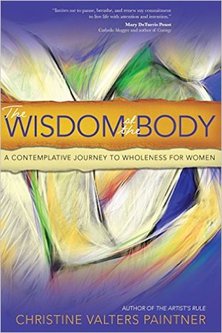
What an honor and privilege to interview Dr. Christine Valters Paintner, a graduate of our Dancing Mindfulness facilitator training program as she celebrates the release of her 10th book, The Wisdom of the Body: A Contemplative Journey to Wholeness for Women (Sorin Books, 2017). Christine is the abbess of Abbey of the Arts, a vibrant and active ministry. Although based in Galway, Ireland, the abbey is global in its outreach, especially through a variety of courses, retreats, and other offerings made online (including the popular Facebook group, Holy Disorder of Dancing Monks).
In Christine's latest book, built from decades of personal experience of her own journey with embodied healing, readers are led through a self-directed retreat experience. Various topics of struggle for women are covered, such as desire, emotional expression, and depletion from true nourishment. Each chapter invites readers into a series of exercises where they can explore, and if they so choose, embody the content inherent in this journey. Expressive arts practices (including conscious dance), yin yoga, and invitations to reflect on wisdom of the ages (presented through Christine's own vibrantly lived experience) make this content come alive. A special feature is that in each chapter, Christine offers a sacred feminine guide for the journey. Women like St. Hildegard of Bingen, Eve, Amma Syncletia, and many others are presented in refreshed light so that modern women may be inspired to draw on these guides, and their teachings, as sources of wisdom. I had the distinct pleasure of offering Christine consultation on her manuscript (and am delighted to be included in the acknowledgments), specifically in the area of trauma-informed presentation. Although Christine writes from a Christian ministry perspective and as an expressive arts educator, I believe that her work should be required reading for therapists who work with women. There are so many solutions offered within The Wisdom of the Body that can help women in their healing, especially from legacies of trauma that wreak havoc on the body. Listen to an interview that I conducted with Christine on 3/10/17 (a live teleconference) as we talked about her own experiences with learning to honor her body, her work with Abbey of the Arts, and of course the newest book. The interview wraps up with a dynamic discussion about why this work is so relevant for women in modern times. Learning to love and embraces one's body in the face of cultural messages suggesting otherwise is a supreme feminist action! -Jamie
Listen on Website (above) or Download (below)
I gotta say, I love dancing Nia. I think you all knew that already. And! And it gives me so much joy to find other movement and dance practices too and try them on. On Friday night I went to a Dancing Mindfulness class at a new-to-me yoga studio called YogaQuest. Two other Nia friends came along and as we entered the space I felt that bit of nervousness of being the newbie in a situation. My review of the evening in a nutshell--Dancing mindfulness is awesome! So good for your mind, body and spirit, and when you meet new people, learn about a new practice and move your body to great music, joy increases! The photo above was taken at the end of class. We all grabbed a fun prop or toys from popular culture that YogaQuest has on hand to make movement/yoga fun. In the center, arms outstretched, is Jamie Marich the leader of our class and founder of Dancing Mindfulness. Jamie was a wonderful facilitator, laying out the practice at the beginning, sharing her geeky love of TV and Broadway musicals and excitedly prepping us for the great playlist she created for the class. She assured those who were new to dancing mindfully to have fun, to not judge ourselves or others and to enjoy the process. I was totally game, 'cause Nia is all about these same ideas.
One concept that she talked about in preparation to move was nonstriving. The word strive got my mental realm churning. To nonstrive I thought, would mean not to work hard or strive to do your best. A bit of confusion set in, why would I want to not strive? So interesting how hearing a word you know, but in a new context changes the way you understand it. The class started, the music was both new and familiar, the space had a great fun, open vibe and the group warmed up to each other and soon were singing, dancing, and moving with a whole lot of joy. I felt at home, it was like Nia free dance, Stages 1-3 for me. Jamie guided us to use our breath, to return to breath at some of the musical changes, to interact with others, go on a quest or hero's journey with our movement and to create a supportive circle of dance. It was wonderful! As the class ended I shared how I had been at a Dancing Mindfulness class in Champaign recently, had a great time and when I saw that Jamie, the founder would be in town I had to come and try a class with her. I purchased her book and in reading the introduction learned what I needed about the word nonstriving and how it related to my movement practice. "...nonstriving: thinking, feeling or acting with focus on the process, not the outcome. The name of this skill confuses many people because in Western culture we tend to associate nonstriving with giving up. Nonstriving does non imply laziness or sloth. Nonstriving is an attitude that encourages you, even in your work, to refrain from trying so hard. In nonstriving, we let whatever happens, happen." Beautiful words! How about you? Do you feel like your life or work is all about striving? Do your thoughts focus on reaching a certain end goal or destination? Or can you enjoy the process, the journey? This week I invite you to focus on nonstriving in class. We'll use our awareness of the base of our body, our foundation, to help us stay present and then let what happens, happen. See you in class! Dance, when you're broken open. Dance, if you've torn the bandage off. Dance in the middle of fighting. Dance in your blood. Dance when you are perfectly free. - Rumi 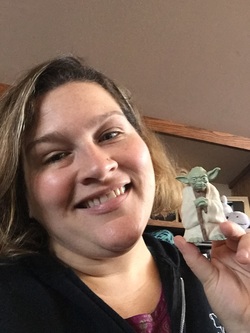 People who know me well can tell you that Master Yoda is my favorite character in the Star Wars universe. I've long looked to Master Yoda as a sage guide, a sponsor, in my own recovery journey where the force has long resonated as a form of Higher Power for me. In my development as a professional counselor, I also turned to Yoda as a role model. As a sponsor, a therapist, a teacher, a yogi, and a practitioner of mindfulness, his wisdom never fails to speak truth to my soul. While all of his "one liners" are excellent candidates as recovery slogans, I was prompted to choose one that most resonated with the Dancing Mindfulness element of mind to lead off Chapter 4 of the new book dedicated to that element. As my Christmas/Holiday gift to you, it is my pleasure to share with you the quote of Master Yoda's that I chose to lead off the chapter, and to give you a glimpse into the chapter itself. Enjoy! This one a long time have I watched. All his life has he looked away ... to the future, to the horizon. Never his mind on where he was. Hmm? What he was doing. —Master Yoda, The Empire Strikes Back The mind is not our enemy. By engaging in consistent practice we can learn to understand the intricacies of how our mind operates in our individual experiences. This consistent practice teaches us how to let our mind work for us, not against us. As a result, we can always come home to the present moment. Too often we see the mind only as an instrument for thinking—an instrument that can run amok with worry and negative ruminating if left unchecked. However, our mind is so much more than our thoughts. Consider that both the breath and the body—elements of dancing mindfulness that we’ve already covered—are guided by mental processes. As we will explore in this chapter, we have a “thinking” or more rational mind, an emotional mind, and a mind that regulates physicality. Some spiritual traditions offer the concepts of a wisdom mind and a spirit or bliss mind, the mental conduit that allows us to connect with spirit. While we can dance with the element of mind in a variety of ways in dancing mindfulness practice, I typically regard the mind as the vehicle that allows for integration of our human experience. As in Native American spirituality, the body, the mind, and the spirit cannot be separated. Mindfulness practice is the process of teaching our mind to work for us, not against us. I get sad when I hear people say things like this: “I can’t meditate. There’s no way I can turn my mind off.” Unfortunately, this stereotype about meditation has taken hold because of popular portrayals of meditation practice as an instantaneously quiet experience. Mindfulness practice is not about turning the mind off. If anything, it’s about turning it on—developing a greater sense of awareness of your experiences and what they can teach you about yourself. Consistent engagement in mindfulness practices that involve activity—exercise, breathwork, journaling, drawing, prayer, dreaming, and, of course, dancing—can help us break through the survival blockage to help us address our emotional wounds. In essence, they allow us to tune and then fine-tune the instrument of our mind. In dancing mindfulness, for example, we remind ourselves to come back to awareness, to honor the present, and to consider the possibilities of creativity and healing. For more on the book project, go to www.dancingmindfulness.com/book Dancing Mindfulness: A Creative Path to Healing and Transformation (SkylightPaths Publishing, 2015) In the wake of falling out of starfish pose,
Maybe not this time try again. Oops, I didn't stand firm, try again. Umm, I missed the mark, try again. Man, I didn't know, try again. Maybe not this time Maybe not next time but sometime I will. I tried again I risked again I cried again How many times again? Tried a different route Forced it to come out I am sworn out but down the road after rest, rest, ummm more rest Oh and more days after that rest I am turning about with a loud shout! Risk again, what? Scary I know and with the right guidance gathered around my frown is slowly turning upright now Lots of bumps Lumps humps I've endured to fall and lose it all Misunderstanding, misled, and a loss of self I've been calling to myself Where is home? Where is it okay? What can I do? Not give up on me. One moment Just one I don't know how many moments will pass to be me and I try again for a small little victory Like falling out is a sweet victory. I tried again Will keep trying again Because it is the part that helps me be with peace, again A friend of mine from grad school was talking about Dancing Mindfulness one day. When she was describing the concept I can remember thinking “Wow, that sounds like something I would really enjoy!” As soon as I got home that evening I went to the Mindful Ohio website to look up more information. The first thing I came across was the video showing others engaged in the practice. It was that very moment I knew I wanted to try a class. Funny enough, even though I desperately wanted to attend a class I was terrified. For a couple months I kept thinking “Ok, this is the week”, but sadly it was not.
In January 2014 I attended the Self-Care for Helping Professional workshop. It just so happened that Dancing Mindfulness was included in the day. I can vividly remember enjoying myself until “Wake Me Up” from Avicii was played. At that very moment I became incredibly overwhelmed by emotion. I did not fully understand what was happening to me. Before leaving that day I talked to Jamie about what I experienced. She was able to normalize the situation for me which gave me a great sense of comfort. Even though I was nervous about the same thing occurring again I started to regularly attended classes. There were many times when I did become quite emotional but I was able to accept that part of myself. In fact, I ended up downloading the Avicii song after the workshop and was able to work through feelings I had been holding on to for a long time. During a few of the classes Jamie talked about facilitator training. I knew the training was something I really wanted to do but again I began to put myself down. I talked to a variety of friends, family, and mentors and all of them encouraged me to sign-up. I decided to take their advice and it ended up being the best decision I had ever made. I truly believe that weekend changed my life and still impacts me in a positive way. The connection I had that weekend and continue to have with the other facilitators is something I cannot describe. The best explanation I can give is that connection you have with your best friend that you have known for years. There was another important piece of the weekend that let me know I was meant to be there at that moment. During our first “dance” as a group Jamie played a beautiful version of “Wake Me Up” by the cast of Glee. I remember smiling and thinking that song would be included in my first community class I facilitated. I knew that Dancing Mindfulness changed my life and I wanted others to have the same experience. I currently work as a Clinical Counselor and proposed the idea of adding a “Creative Movement” group (Creative Movement is Dancing Mindfulness just under a different name) for clients. The response I have gotten from other counselors at the agency has been amazing! My group jumped from one person to 8 people in a matter of two weeks! The clients have responded positively and tell me every week “Please do not take this group away.” Additionally, I had the opportunity to facilitate my first community class two weeks ago and of course “Wake Me Up” was on the playlist. I keep continuing to grow as participant and as a facilitator each week. If someone asked me what Dancing Mindfulness means to me I would have to use a line from “Wake Me Up”, which is “All this time I was trying to find myself and I didn’t know I was lost.” I truly was not aware just how much I needed Dancing Mindfulness in my life to reconnect with myself! I discovered Dancing Mindfulness at age 5 although I don’t believe it’s creator Jamie Marich was born yet. It was a common day. I was invited over by some older teenage girls to come play “American Bandstand” in their makeshift playhouse….an abandoned school bus carcass discarded at the end of their driveway (If the Harler girls from Mathias Drive in Columbus ever read this please contact me as I want to thank you for saving my life). I can remember it like it was yesterday when the 45rpm began whirling on the little plastic record player and they encouraged me to “strut my tiny stuff” down the aisle of the bus to the thumping sound of “These Boots are Made for Walking”. Without knowing it I embodied my first Element of Dancing Mindfulness: breath. As I was given permission to show up fully in a non-judging environment I felt myself inhale fully and exhale completely. Unbeknownst to me I had been holding my breath since birth as if to guard myself from harm. As they smiled and cheered me on I remember, for the first time ever, I felt joy inside of me well up until it overflowed to the point I had tears pouring out of my eyes. My face had spent many of my short 5 years covered in tears but never from joy. I couldn’t contain this new feeling nor did I want to. I felt foreign freedom and sense of letting go as I danced, shimmied, swayed and of course strutted. This dance brought me intense elation, a lightness of Spirit. For the first time ever I wasn’t trying to be good enough, smart enough, perfect enough. In fact I wasn’t striving at all. I just was. I was one with my body, my breath, the amazing sounds. I caught myself giggling like the other girls I would enviously watch on the playground at school and I didn’t even know why I was laughing. I do now. I had touched my innocence. I must share I didn’t have much to laugh about at that time. I was growing up in a home ransacked by alcoholism. I began escaping to the “playhouse” every chance I got. I would hide in a hedgerow in my backyard which gave me a perfect view to the school bus and like a panther I would sit crouched and wait until I saw signs of life near the bus and pounce out into the open hoping the Harler girls (and not my troubled and intoxicated mother) would see me and ask me to dance. But all too soon the Harlers moved and with them went my safe haven in which to thrive. My short lived freedom was sweeter than anything I had ever known but it was over. My hedgerow hideout was also soon discovered and I was no longer allowed to disappear. I soon found sanctuary in a tree but soon I was told was for “boys” and made to get down-and stay down.
After that my “her-story” is not unlike many other women that I know. I grew up in the tender yet tumultuous 60’s-70’s with a lot of family secrets. By age 11 I began discovering substances that would bring me fleeting feelings “similar” to that of the abandoned bus dances and the safety of the hedgerow bliss I had enjoyed. That discovery caused over 20 years of self-destruction including full blown alcoholism by the time I was 14. My return to movement didn’t come for another 46 years. I had a span where my life resembled a bad country song. In 2007 within months my dog (the ultimate confidant) died, my dad died (he had been my hero my whole life; the only steady, constant person in a pool of insanity), my only child moved 700 miles from home to try and rebuild a relationship with his father and I got divorced. I was thrown into premature menopause from the stress according to my physician. Everything that had ever made sense to me was suddenly gone. The following few years were a roller coaster of emotion. I had deep and powerful spiritual beliefs and practices yet I found myself struggling. I entered a relationship with a wonderful man, a spiritual partner, and yet I found it growing more difficult to give of myself. Then as if on a death wish type mission I made some career decisions that although looked good on the outside from an intellectual perspective yet was a horrible fit for me. My gut, my heart, told me not to make the change yet I didn’t see any other way. My heart had endured so much pain in recent years and without even knowing it I had at some point given up trust in it. I began plummeting deeper and deeper and I rapidly sunk into a depression deeper and darker than I had ever known. I no longer had the sweet ease and comfort brought on by mind altering substances. I was raw and it was real and I couldn’t find relief. I had developed a beautiful meditation practice as part of my 12 step recovery program and during this time I couldn’t quiet my mind no matter how long I sat. It was during this time that a friend in casual conversation mentioned going to a Dancing Mindfulness class. Something on the visceral level sparked. I am convinced it was Divine Intervention in answer to the screams of my soul begging for help night after night. Instantly following her mention I went online and unfortunately found there wasn’t a class anywhere near me but I immediately ordered the DVD available. Well....let’s just say I haven't missed a day of movement since. I began taking “Dancing Mindfulness” breaks each hour at work (a perk of the less than stellar fitting job was a solo office where I could close the door and dance). I would close my office door and “drop in”. I found my breath again. My spirit. A new story began to emerge. At the end of those sanity breaks I felt like I could go on. These mini Dancing Mindfulness moments gave me the energy and clarity and connectedness to my Mind, Body & Spirit I needed. When I got home at night I would dance as best I could for 20 minutes trying desperately to follow along with the instructions on the video learning about the Attitudes and Elements. On days when I didn’t have to go in early I would start my day dancing. Me! A woman who was on the floor 2 months prior curled up in a ball wondering if suicide was once again my only option? I followed an inner nudge and began researching training classes only to find there was one being hosted in the near future by the Dr. Marich only 2 hours from my home. Until my training I would dance day after day in my basement after work. I started developing an insatiable desire to share the technique. It didn’t make sense. I had never even stepped foot in a Dancing Mindfulness class. I followed this nudge and miraculous financial, physical and emotional synchronicities began appearing culminating in me being certified as an instructor. I knew this is what I wanted to do but fear and inadequacy keep me in it’s grip. I had tried to teach “other” movement forms before and just couldn’t get off dead center. I feared this would once again be my story. I decided to continue my personal practice. As I began training deeply on my own I found myself suddenly devastated by a mysterious back injury. In the first days following the injury I missed dancing more than anything as I lay day after day on the floor. Some days all I could do was focus on the rhythm of the dance of my breath or do my best to embody the vibration of sound. In my mind I would tell a new story by visualizing my cells moving inside my body healing the inflammation, pushing the bulging discs back in place, soothing the angry muscles in my hips. Some days all I could do was as the creator of this movement, Dr. Marich, had taught me in training “think of the floor as your canvas. Your body the brush.” I would mindfully move one leg, then the other. I would gently arch my back with a crescendo of music. During this challenge I had no choice but to practice acceptance and non-striving. As soon as I could so much as stand upright, I tapped into the element of “beginners mind” and began to mindfully stand for 5 minutes, 10 minutes, as long as I could and sway listening carefully to my body’s needs. I was literally teaching myself to listen to my inner wisdom and trust that my body, with its now weakened spine and damaged hip structure, would support me in a new and glorious way. I learned unique ways of moving and I embraced this meditative form of movement like a hungry child with a fresh orange. I devoured every drop of soul nectar available. Daily I practiced non-judging as I fell short of my ego’s goal to return to full movement each day. Slowly, dance by dance, moment by moment, as all the elements and attitudes fused together I not only found physical health but my spirit healed in miraculous ways. I have danced in witness each morning as the 53 year old woman I am has organically merged with the enchanted 5 year old school bus queen of the strut. I write this 12 weeks post injury. I have regained full range of physical motion from my daily practice and much more importantly I have regained full range of motion in my heart. As the technique began shining a light on my truth I found that the grief I experienced in 2007 had hurt so much I had slammed the door on my heart shut. With each session the door begins to crack open a bit. A little more light enters. Today Dancing Mindfulness has not only flung the doors wide open but I am blinded by the light of healing I have experienced. In 2015 my hope is to share this incredible mindfulness in motion. To share the thrill of a truly holistic personal experience. The ultimate experience of self discovery; becoming one with myself. Originally Published on StartAgain Media
“There are an infinite number of ways in which people suffer. Therefore, there must be an infinite number of ways in which Dharma is available to people.” -a 98-year old Chan Master, as shared with Jon Kabat-Zinn What images do you associate with the word mindfulness? Do you see a fit yogi sitting on a beach in a perfect lotus position, entranced by the surrounding calm? Or are you going to a picture of a saintly Buddhist monk, eyes closed, clutching his prayer beads? Maybe you’re seeing a large group of people gathered at a festival, chanting “Om” in unison. You might even picture someone taking deliberate steps through a garden maze, savoring each pace of a walking meditation. Here’s a new one to try out: Imagine a dance floor full of people. Picture a community of all shapes, sizes, and physical abilities discovering their individual body’s sense of dance through the simplest of rhythmic movements. A gathering of beings, getting down and grooving to every musical genre imaginable. A collection of souls, each with his or her own unique story to tell, having fun and being themselves in the moment, tapping in to the fullness of their human potential. This is dancing mindfulness. In modern Western cultures, we tend to be inhibited when it comes to dancing, fearing that if we don’t dance well, then we really shouldn’t be dancing, victims of the looks are everything mentality. In essence, there’s a whole lot of judging--of others but especially of ourselves--and not a lot of witnessing. What if those of us who have experienced the beauty of mindful practice could work with people to move in a non-judgmental way and stay present? Imagine the healing potential we can help people realize, whether we are working with them in community or clinical settings. Tapping into each individual’s potential for movement, creating beauty, and achieving mindful awareness is what defines a dancing mindfulness practice. Dancing mindfulness helps people in the modern era get back to some of what we lost along the way. Dancing Mindfulness is a wellness practice that grew from my own clinical experiences working with trauma and addiction. Dancing Mindfulness can be learned in a group class and practiced in community, as well as individually; experience in yoga, meditation, or dance is not required to practice. Participants are simply asked to come as they are with attitudes of open-mindedness. Structured classes begin with a facilitator gently leading participants through a series of breathing and body awareness exercises. Following a mindful stretch series, the facilitator leads participants up to their feet for letting go and dancing with the freedom one might tap into by simply turning on some music and dancing around their houses. Many participants find this practice, especially when supported by the energy of other practitioners who are also taking risks, a cathartic experience. Although some find themselves overwhelmed and intimidated, they are encouraged to just acknowledge their experience, without judgment, and can choose to opt out of a certain dance or use their breath and movement as vehicles for moving through the discomfort. Safety is imperative to Dancing Mindfulness practice—facilitators emphasize that no one ought ever feel forced to participate in any component of the practice. The primary attitudes cultivated by mindful practice, as identified by Kabat-Zinn (2011) in his synthesis of mindfulness study, are used as thematic guidelines in structuring classes: acceptance, beginner’s mind, letting go, non-judging, non-striving, patience, and trust. Any of these attitudes may be used as a thematic guide in choosing music for the class, or the facilitator may call upon a series of these attitudes in dancing with an element. The elements of Dancing Mindfulness are networks through which mindfulness can be practiced: breath, body, mind, spirit, sound, story, and fusion of all the elements. A facilitator may elect to start the class working with breath in silence, advising participants that when they use their bodies to come up to their feet and dance, their breaths are with them as a guiding force. Using breath to guide movement is a way, for example, to cultivate the attitude of trust. Each class seems to take on a life of its own, depending on the venue and the students. Some classes seem to naturally cause participants to connect more with other dancers, but this process is to never be forced for the sake of safety. Other classes seem to be focused on personal depth of exploration. Regardless of the form the class takes, we always end on the ground with safety and relaxation, connecting back with the breath, the heartbeat, and often some light chanting. Since the beginning of 2013, I’ve had the privilege of training 52 facilitators in the United States and Great Britain who expressed an interest in the growing practice and a willingness to share it in their communities. It delights me that each facilitator brings her own authenticity to the practice and that no two facilitators lead a Dancing Mindfulness practice in exactly the same way. In the following series of blogs, The Art of Dancing Mindfully, I will be exploring more facets of the Dancing Mindfulness practice and its manifestations in both the group and individual format. See my earlier StartAgain blog, “This is Why I Dance” for a personal reflection on my individualized Dancing Mindfulness practice. I will share a bit more of my own story with developing and taking the Dancing Mindfulness practice into the community, in addition to addressing some of the criticisms I’ve heard that Dancing Mindfulness “isn’t really mindfulness.” I will also share some reflections of other people who’ve benefitted from cultivating a personal and communal Dancing Mindfulness practice. If you’d like to read more about the practice and see some sample videos of how the practice plays out, please go to: www.dancingmindfulness.com. REFERENCE Kabat-Zinn, J. (2011). Mindfulness for beginners: Reclaiming the present moment-and your life. Boulder, CO: Sounds True Books. Originally published on StartAgain Media
“Mindfulness is the actualization of humanity’s inherent basic goodness.” -Jakusho Kwong-roshi This program’s content is primarily self-discovery or self-care in nature and is not acceptable as continuing education. Several continuing education approval boards, including my own profession’s in my home state, use this line, or some variation of it, to reject programs related to yoga, compassion fatigue, self-care, or any other programs that they deem to be too “new age,” “expressive,” or “experiential.” It’s sad to say that at this point, I’m used to writing appeal letters and making a case for the legitimacy of mindful, experiential learning as valid continuing education for helping professionals. In fairness, not all regulatory continuing education overseers are in the dark ages; just about all of the national accreditation bodies are on board with the legitimacy of mind-body healing and creative approaches to learning. My negative experiences have been largely on the state level. Last year, when I stood before the counselor standards board of my home state, my jaw dropped and I literally froze in shock to hear one of the members say, “We set a dangerous precedent when we call self-care education. Some of the programs you do are more about professionals trying out some of these things (e.g., yoga, dance, meditation), and counselors should be doing that on their own time. Before long, counselors are going to want to count going on retreats and chanting and lighting incense and going to their own therapy as education. Education is education and self-care is self-care.” After taking some deep ujjayi breaths to move from the freeze response, I suggested that if we awarded counselors a certain portion of their required continuing education credits to try out events and programs that teach them how to take care of themselves better, then maybe we wouldn’t have such high rates of burnout. Maybe there wouldn’t be so many ethical violations. Self-care, in the eyes of many of us, is the most valuable continuing education of all. . The anger I experienced in response to their ignorance about the value of self-care as education has made me turn to the literature to further craft some of my arguments. There are over twenty peer-reviewed articles presenting research from both a qualitative and quantitative perspective on the value of self-care, particularly mindfulness meditation training, While I am currently in the process of formally synthesizing and reviewing these for an academic article, I wish to share with you some of the most poignant conclusions from this cannon through my blog: · Promoting mindfulness in psychotherapists-in-training could positively influence the therapeutic course and treatment results in patients (randomized, double-blind controlled study; Grepmair, Mitterlehner, Loew, et al, 2007) · Health care professionals participating in a mindfulness-based stress reduction program (MBSR) were able to more fully identify their own themes of perfectionism, the automaticity of “other focus,” and their tendencies to always enter “fixer” mode; this recognition led to numerous changes along personal and professional domains (grounded theory; Irving, Park-Saltzman, Fitzpatrick, et al., 2014); a similar study that exclusively studied nurses yielded similar findings (Frisvold, Lindquist, McAlpine, 2012) · In an extensive mixed methods research study with working psychotherapists from a variety of theoretical backgrounds, Keane (2013) concluded that personal mindfulness practice can enhance key therapist abilities (e.g., attention) and qualities (e.g., empathy) that have a positive influence on therapeutic training. He contends that mindfulness practice could provide a useful adjunct to psychotherapy training and be an important resource in the continuing professional development of therapists across modalities. In another qualitative study article that demonstrates the positive impact of mindfulness training on therapist trainees, Christopher, Chrisman, Trotter-Mathison, et al. (2011) make one of the wisest contentions that I’ve ever read in peer-reviewed literature: Although self-care is often touted as being important to counselors and psychotherapists, historically little has been done within graduate school to provide future therapists with self-care strategies (p. 318). When I was a graduate student at both the Master’s and Ph.D. level, little, if anything was said about the importance of self-care. In working with graduate students as a mentor and supervisor myself now, it saddens me that the landscape is still pretty bleak in most programs. If you are in a graduate program or have gone through one where self-care and self-discovery was promoted, I would be very happy to hear from you about your experiences and how they impacted your formation as a helper. For those of us who believe in the value of self-care and self-discovery and have experienced its benefits in our professional formation, the responsibility is ours to speak out about how it works. References Christopher, J.C., Chrisman, J.A., Trotter-Mathison, M.J., Schure, M.B., Dahlen, P., & Christopher, S.C. (2011). Perceptions of the long-term influence of mindfulness training on counselors and psychotherapists: A qualitative inquiry. Journal of Humanistic Psychology, 51(3), 318-349. Frisvold, M. H., Lindquist, R., & McAlpine, C. P. (2012). Living life in balance at midlife: Lessons learned from mindfulness. Western Journal of Nursing Research, 34, 265-278. Grepmair, L., Mitterlehner, F., Loew, T., Bachler, E., Rother, W., & Nickel, M. (2007). Promoting mindfulness in psychotherapists in training influences the treatment results of their patients: A randomized, double-blind controlled study. Psychotherapy and Psychosomatics, 76, 332-338. Irving, J.A., Park-Saltzman, J., Fitzpatrick, M., Dobkin, P.L., Chen, A., & Hutchinson, T. (2014). Experiences of health care professionals enrolled in mindfulness-based medical practice: A grounded theory model. Mindfulness, 5, 60-71. Keane, A. (2013). The influence of therapist mindfulness practice on psychotherapeutic work: A mixed-methods study. Mindfulness. DOI: 10.1007/s12671-013-0223-9. |
Dr. Jamie MarichCurator of the Dancing Mindfulness expressive arts blog: a celebration of mindfully-inspired, multi-modal creativity Archives
September 2022
Categories
All
|
||||||
Contact |
Memberships & Affiliations |
|
Please direct all inquiries to:
[email protected] © Mindful Ohio & The Institute for Creative Mindfulness, 2021 Terms of Use Privacy Policy |
Dancing Mindfulness/The Institute for Creative Mindfulness is an organizational member of the International Association of Expressive Arts Therapists, the Dance First Association, and NALGAP: The Association of Gay, Lesbian, Bisexual, Transgender, Addiction Professionals and Their Allies; Dancing Mindfulness proudly partners with The Breathe Network and Y12SR: The Yoga of 12-Step Recovery in our shared missions.
|
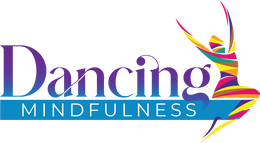
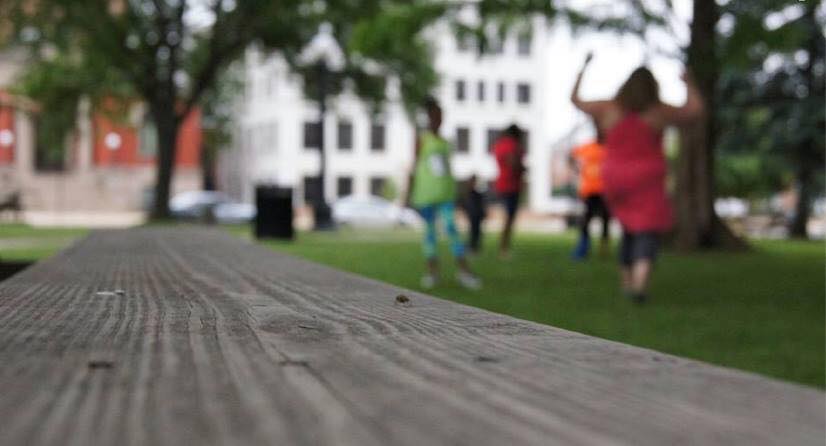
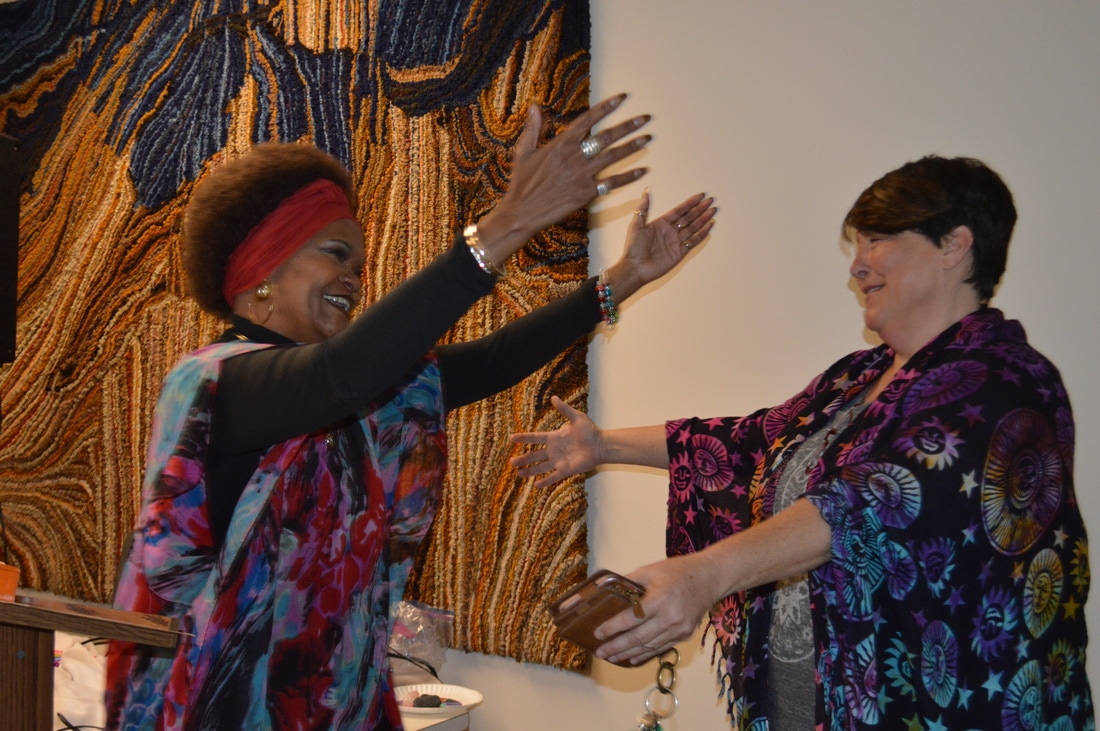
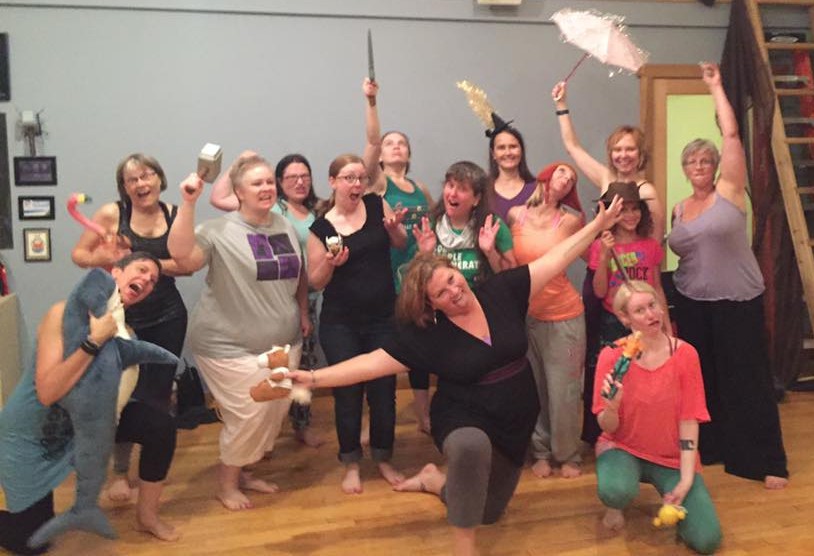

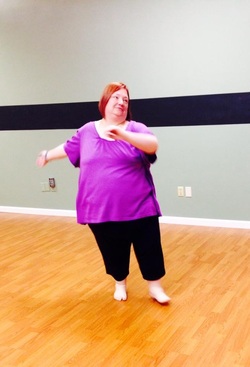
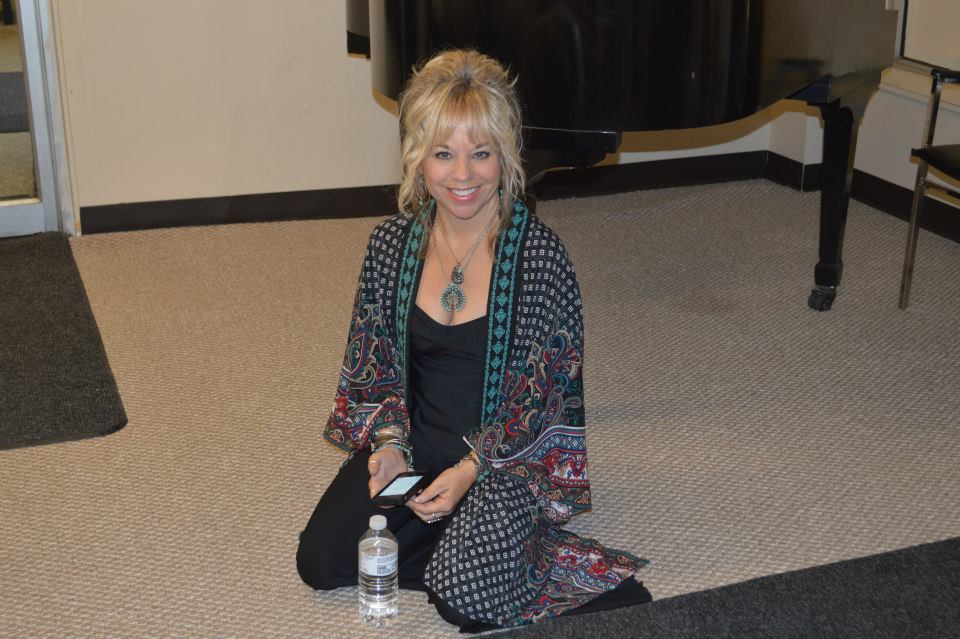
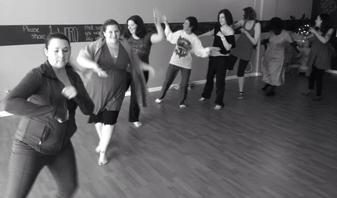
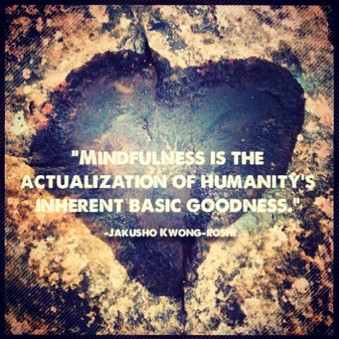
 RSS Feed
RSS Feed